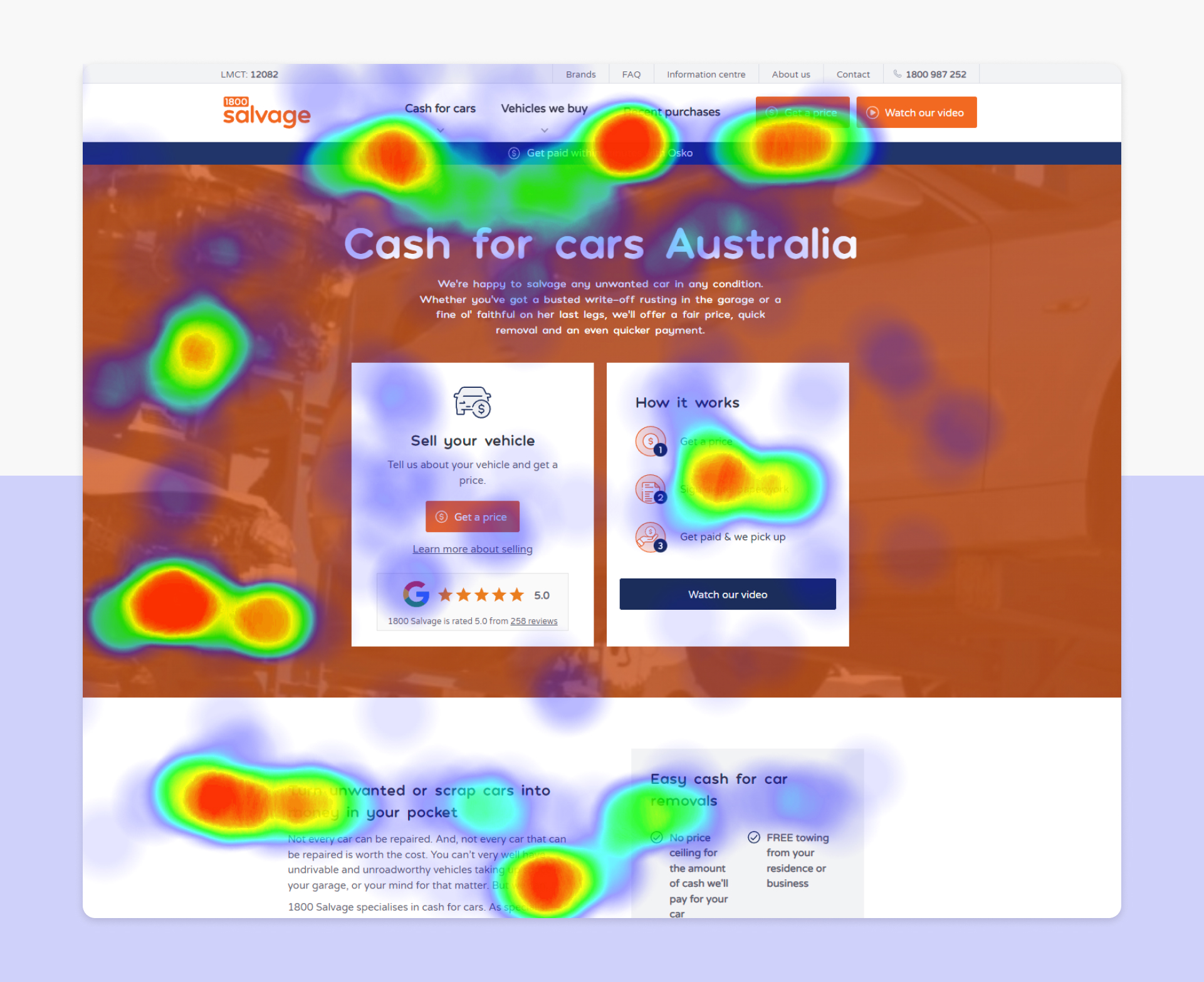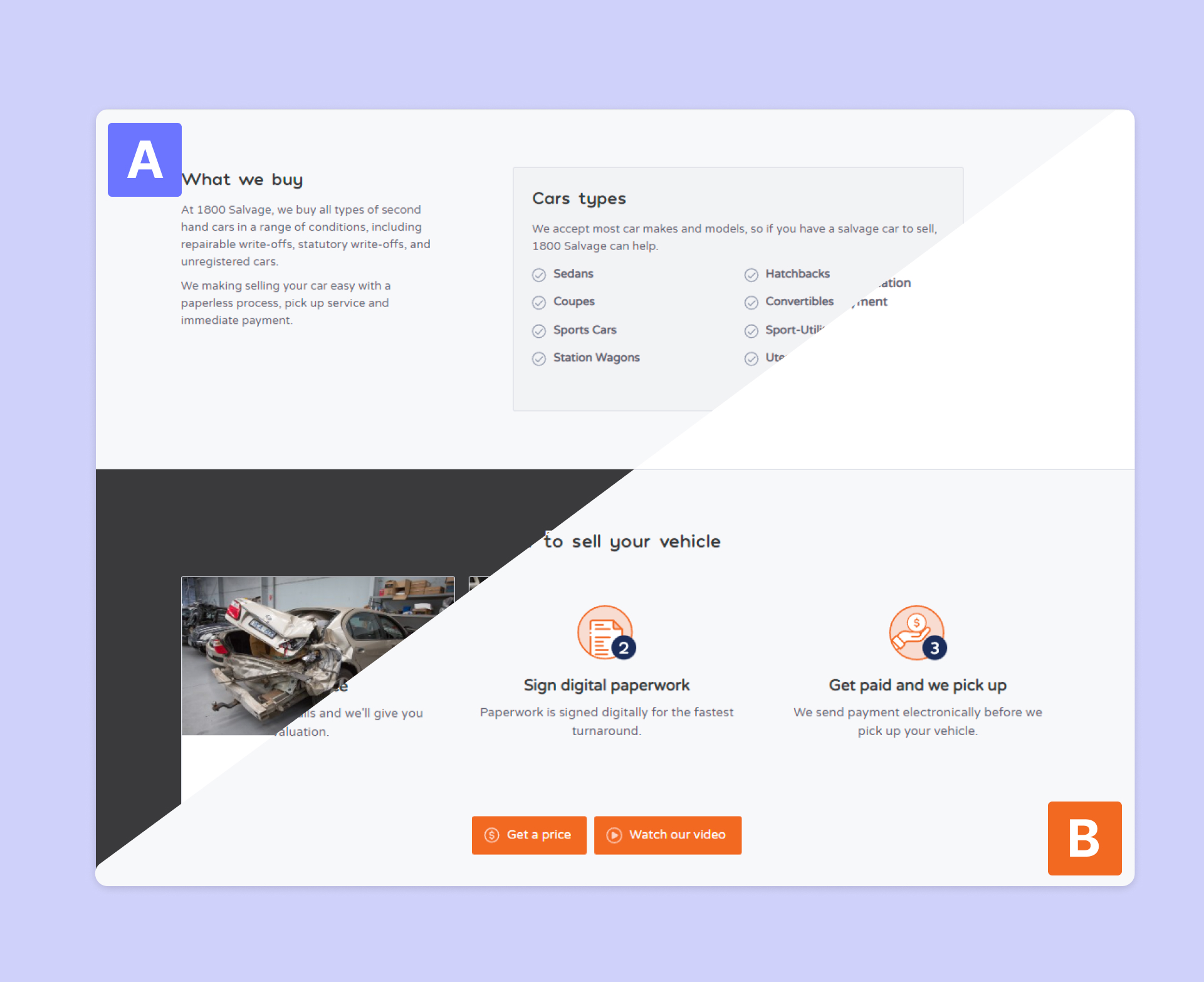We share the conversion rate optimisation best practices that will help you optimise your website's conversion funnel and drive revenue growth.
Including 9 strategies to give your conversion funnel a boost
As a leading digital marketing agency, EngineRoom has extensive experience in CRO. It is one of the most important marketing strategies we implement with our clients.

Our approach has been proven effective time and time again through success stories like Policrete, an Australian concrete flooring company. By optimising their website and highlighting their unique value proposition, we achieved a remarkable 400% improvement in their conversion rate. This resulted in increased revenue and significant growth for their business.
But that's not all - our digital marketing strategy also resulted in substantial savings for Policrete. They saved $98,000 per year compared to their previous strategy, allowing them to reinvest resources into their business and drive sustainable growth.
These results speak to the power of a comprehensive CRO strategy tailored to each business's unique needs and goals. By focusing on key principles and leveraging data analysis and experimentation, we’ve helped businesses achieve remarkable results and unlock their full potential.
In this article, we'll share nine expert tips based on our experience working with clients like Policrete. Whether you're a small business owner or a marketer, these best practices will help you optimise your conversion funnel and drive revenue growth.
CRO = Small improvements for big long-term gains
Conversion rate optimisation (CRO) offers a way to gain incremental returns from small improvements on your website that develop over time. CRO services focus on improving a website's performance to increase conversions.
Adopting current CRO best practices, such as A/B testing and mobile optimisation, increases the chance of converting users when they visit your business online. If you own a lead generation website, your key conversion metric will likely be acquiring visitor contact information through form submissions or phone calls. These tips will also positively impact CRO on eCommerce websites – where the goal is converting website visitors into paying customers.
You can check out some of our team's great results with CRO and SEO services in our Policrete Case Study.
[tip_box]
Policrete Case Study
The Policrete website has undergone a remarkable transformation, with over 400% improvement in conversion rate. By creating an improved user experience and emphasising their value proposition rather than price point, the team at Policrete have achieved fantastic results that will help them secure high-value projects for years to come.
[/tip_box]
[feature_link]See the Policrete Case Study here[/feature_link]
As a leading digital marketing agency, EngineRoom has extensive experience in CRO. Our expertise in this field has enabled us to help businesses achieve remarkable results, including increased revenue, improved user experience and increased customer acquisition.
While there isn't a universal set of best practices for CRO, we've identified some core principles that have proven effective for optimising our clients' websites. These principles have allowed us to produce consistent and reliable results, regardless of the industry or business size.
Conversion rate optimisation best practices
1. Conduct user testing and surveys
There’s no special prize for guessing the number one CRO best practice! User testing and surveys are powerful tools for gathering insights into how website visitors interact with your site and what they are looking for. User testing can also help you unearth and fix any pain points hindering conversions, such as confusing navigation or poor page loading performance.
A study by the Nielsen Norman Group found that usability testing can improve conversion rates by up to 200%! When you consider that any conversion rate improvements mean a lower CPA and more money in your pocket, the impact of user testing on CRO strategies cannot be overstated!
2. Optimise your forms
Forms are one of the most important elements of a lead generation website, as they are the key to capturing contact information. To optimise your forms for maximum conversions, ensure they are short, simple, and easy to fill out.
A recent study found that forms with fewer than four fields converted up to 160% better than forms with more fields. Ensure your form is visually appealing, and avoid asking for information not essential for lead generation.
Your forms must be mobile-friendly as the number of site visitors accessing websites predominantly from their mobile devices continues to grow. A recent Google study revealed that 61% of users are more likely to abandon a website if it is not optimised for mobile devices.
3. Use A/B testing
A/B testing is the process of testing different versions of your website to determine which one performs better. While it may be tempting (and less time-consuming) to “go with your gut”, let the team vote for their preference or view the choice between two options through your own internal lens; it’s almost impossible to determine which will likely perform better without proper testing.
According to a study by AI Multiple, 75% of the top 500 online retailers use A/B testing platforms, so you’ll be in good company! Even Google itself uses A/B Testing. A/B testing was actually first developed by some of the key players in Silicon Valley. In fact, in 2011, Google performed more than 7,000 A/B tests on its search algorithm.
You can use A/B testing to test various elements of your website, such as the headline, calls to action (CTAs), forms, checkout, product descriptions and pop-ups. Make sure that you are testing only one element at a time and that you have a large enough sample size to get results of statistical significance.
4. Make your website mobile-friendly
Google’s statistical data also reveals that more than half of all website traffic now comes from mobile devices. It must be responsive with good page load speeds to ensure your website is optimised for mobiles and other devices. This involves using mobile-friendly images and videos.
Ensuring that any forms and pop-ups are mobile-friendly is also crucial, as mobile visitors are less likely to provide their contact information if the form is difficult to fill out.
5. Make it easy to contact you
One of the most important aspects of lead generation websites is making it easy for visitors to contact you. Ensuring your contact information, such as your phone number and email address, is placed in a prominent location on your website is all-important to conversions.
You should also consider adding a contact form to your site so website visitors can easily send you a message.
6. Offer a free resource
Offering a free resource, such as a white paper or e-book, is a great way to entice visitors to provide their contact information! When visitors see that they can receive valuable information for free, they are more likely to fill out a form and provide their contact information.
Ensure the resource is relevant to your target audience and provides valuable information to help solve their pain points.
7. Make landing page designs with impact and appeal
Landing pages are standalone pages designed to convert website visitors. Modern landing pages build trust with the audience by including testimonials, social proof and other trust factors.
Businesses with eCommerce sites design their landing pages to persuade visitors to act on an offer of a tangible, physical product.
Lead generation websites should feature landing pages with a simple, focused design and a clear call to action that encourages visitors to provide their contact information. Use a landing page for each of your free resources on a lead generation website design, and ensure the page is optimised for lead generation, with a clear CTA and a simple form for visitors to fill out.
8. Make use of pop-ups - but don’t overdo it
Pop-ups can be a powerful tool for capturing the contact information of visitors. When used correctly, they can help increase your site’s conversion rate and capture more leads.
However, it's important to use them in moderation and not overuse them, as they can quickly become annoying to visitors! Ensure the pop-up is relevant to the visitor and provides valuable information, such as discounts or free resources.
9. Provide social proof of the value you offer to prospective customers
Social proof is based on the idea that people are more likely to take a specific action when they see that others have taken that same action. To provide social proof, you should consider including customer testimonials, case studies, and other types of proof that demonstrate the value of your products or services.
The CRO process: Make an impact with 9 expert strategies
Improving your CRO strategy is a powerful tool for not only increasing conversions in certain situations but also the quality of those conversions, a consideration that is often overlooked. By following the strategies for improving CRO on your lead generation or eCommerce website, you can identify areas for improvement, develop hypotheses, conduct A/B testing, and use statistical methods to determine whether the changes made had a significant impact on your conversion rate.
These strategies are crucial to ensure that your website is not only converting more visitors into customers but also attracting high-quality leads that are more likely to convert into long-term, loyal customers.
1. Identifying the target audience
Before you start optimising your website or application for conversions, you must identify your target audience. Knowing your target audience's interests, motivations, and pain points will help you tailor your messaging and design to better resonate with them.
2. Defining the conversion goal
Once you have identified your target audience, you can define the conversion goal. Identify the specific action you want visitors to take on your website or application, such as making a purchase, form submissions, or subscribing to a newsletter. Well-defined goals help to set clear expectations of the results you want to achieve and help to develop the framework for the CRO process.
3. Gathering data
Collect existing consumer data as well as qualitative and quantitative research on user behaviour and website performance. Draw on data from your Google Analytics account to view data on your paid marketing efforts as well as heat maps and surveys.

4. Identifying areas for improvement
Analyse the data to identify problems such as high bounce rates, low click-through rates, or low conversion rates.
5. Developing hypotheses
Based on the analysis, create hypotheses about how to improve the conversion rate on your own site.
6. Conducting A/B testing
A/B testing compares two versions of a website or landing page to determine which version performs better. Businesses can determine which changes result in the highest conversion rate by making small changes to elements such as copy, images, and layout.
Implement changes on a portion of your website or application (the treatment group) and compare the results to the original (the control group).

7. Analysing results
Use statistical methods, such as statistical significance, to determine whether the changes had a significant impact on the conversion rate.
8. Implementing the winning variant
If the changes improve the conversion rate, implement the changes on the entire website.
9. Continuously optimising
Repeat the process to continuously improve the conversion rate over time.
And there you have it!
Utilise the CRO best practices and practical step-by-step guide with your website; they will go a long way to improving not only conversions but the quality of conversions too.
If you're looking for help with your CRO efforts, contact EngineRoom today to learn how we help you achieve your goals. Our team of experts is here to help you every step of the way, from conducting user testing and surveys to optimising your website for mobile visitors.






